Abstract
Aerosols of infectious bovine rhinotracheitis virus were generated with a Devilbiss 40 nebulizer from Eagle's minimum essential medium, nasal secretion from a noninfected calf and nasal secretion from a calf artificially infected with infectious bovine rhinotracheitis virus and aged in a rotating drum at temperatures of 6 degrees C or 32 degrees C and relative humidities of 30% or 90%. The aerosols were sampled at seven minutes after start of spraying, one hour, two hours and three hours with an all glass impinger (AGI-30) and titrated for infectivity in cell cultures. Physical decay was determined by a rhodamine B tracer technique. During spraying (seven minutes from start of spraying), the virus was usually more stable in aerosols of nasal secretion from a noninfected calf and at 90% relative humidity. In nasal secretion from a noninfected calf the virus survived best at 90% relative humidity when the temperature was 6 degrees C and best at 30% relative humidity when the temperature was 32 degrees C. During aging, biological decay was greater at the higher temperature, and at 6 degrees C, the highest decay rates occurred at 30% relative humidity in Eagle's minimum essential medium and at 90% relative humidity in nasal secretion from a noninfected calf. The stability of infectious bovine rhinotracheitis virus infected nasal secretion was not widely different from that in noninfected nasal secretion, although under certain conditions greater survival occurred in the noninfected secretion.
Full text
PDF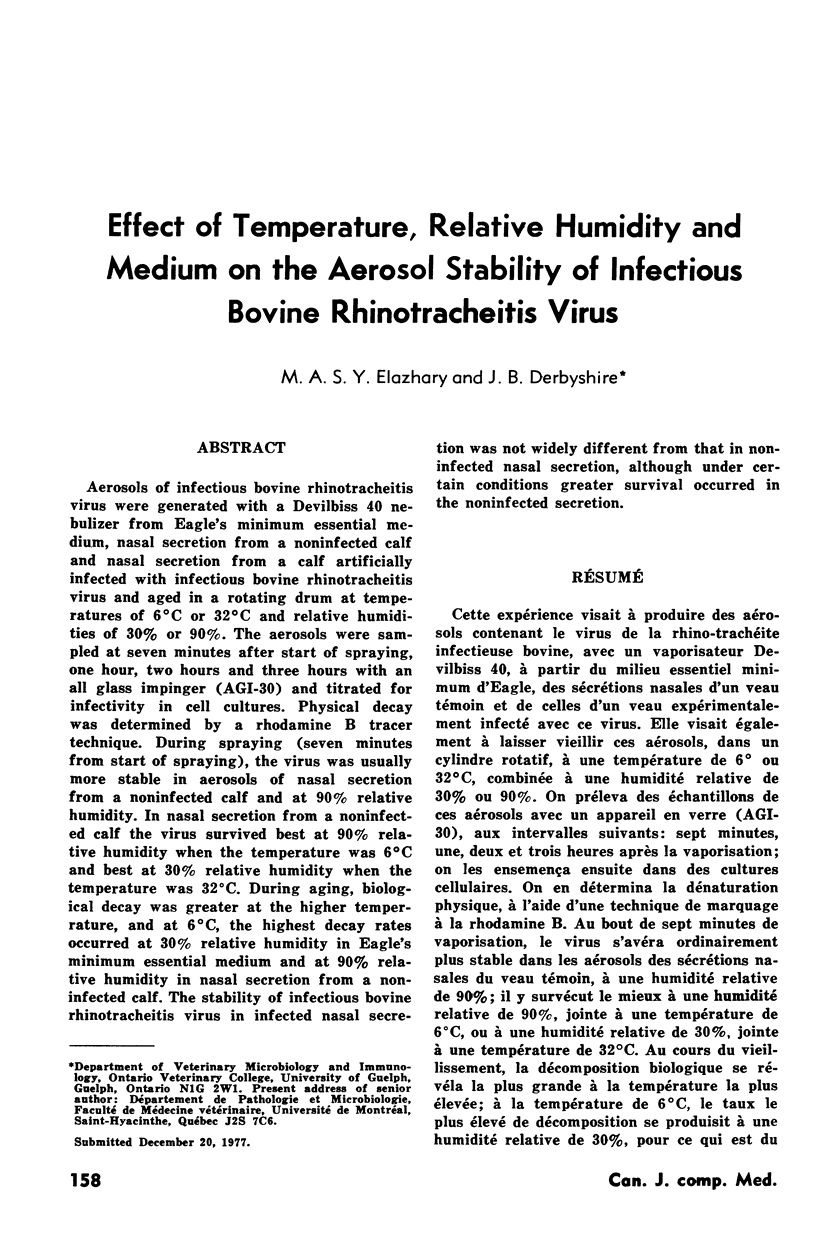
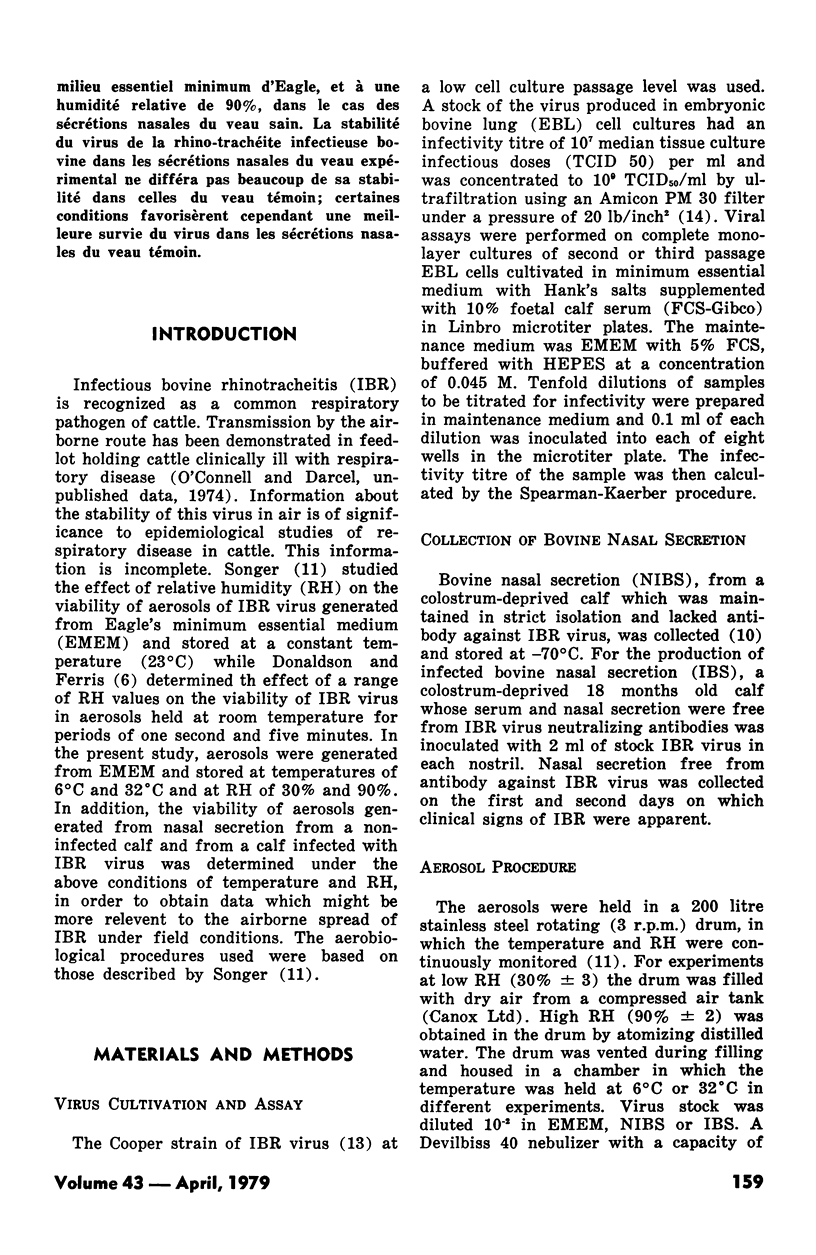
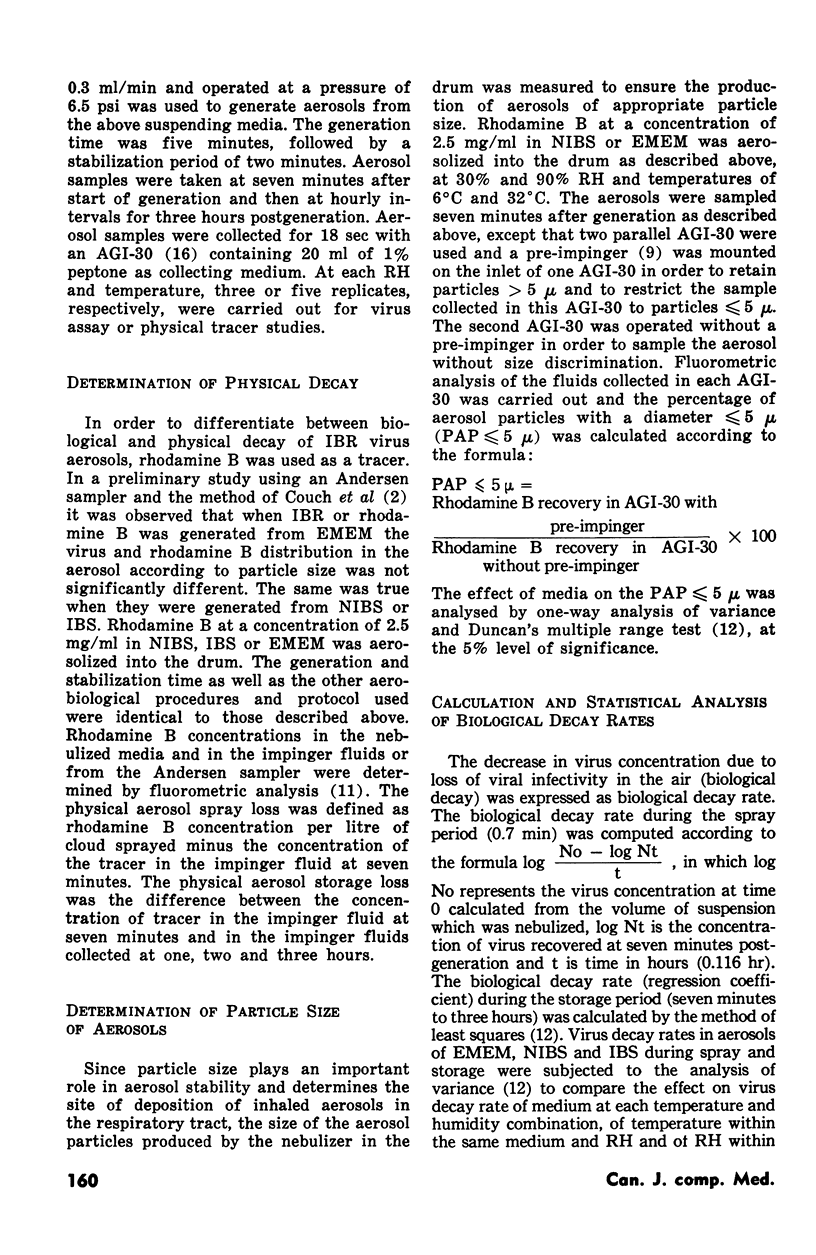
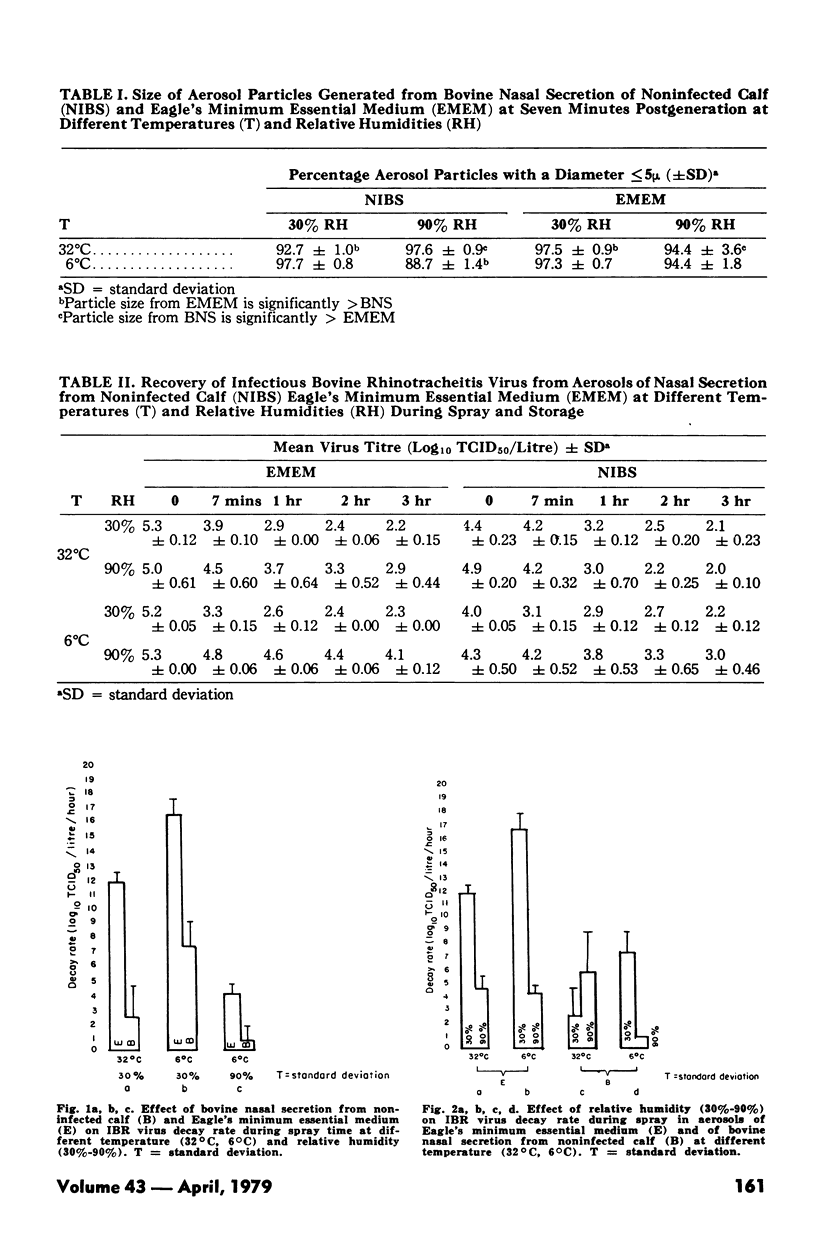
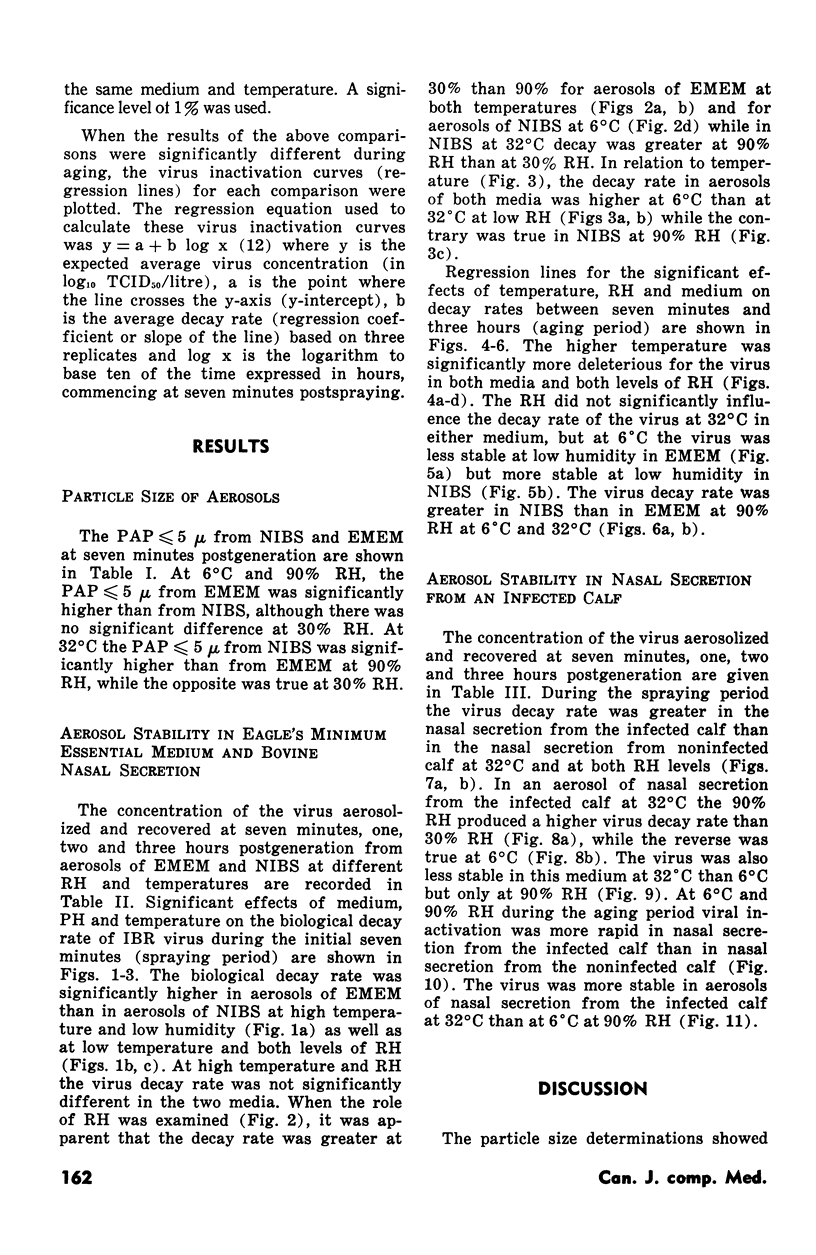
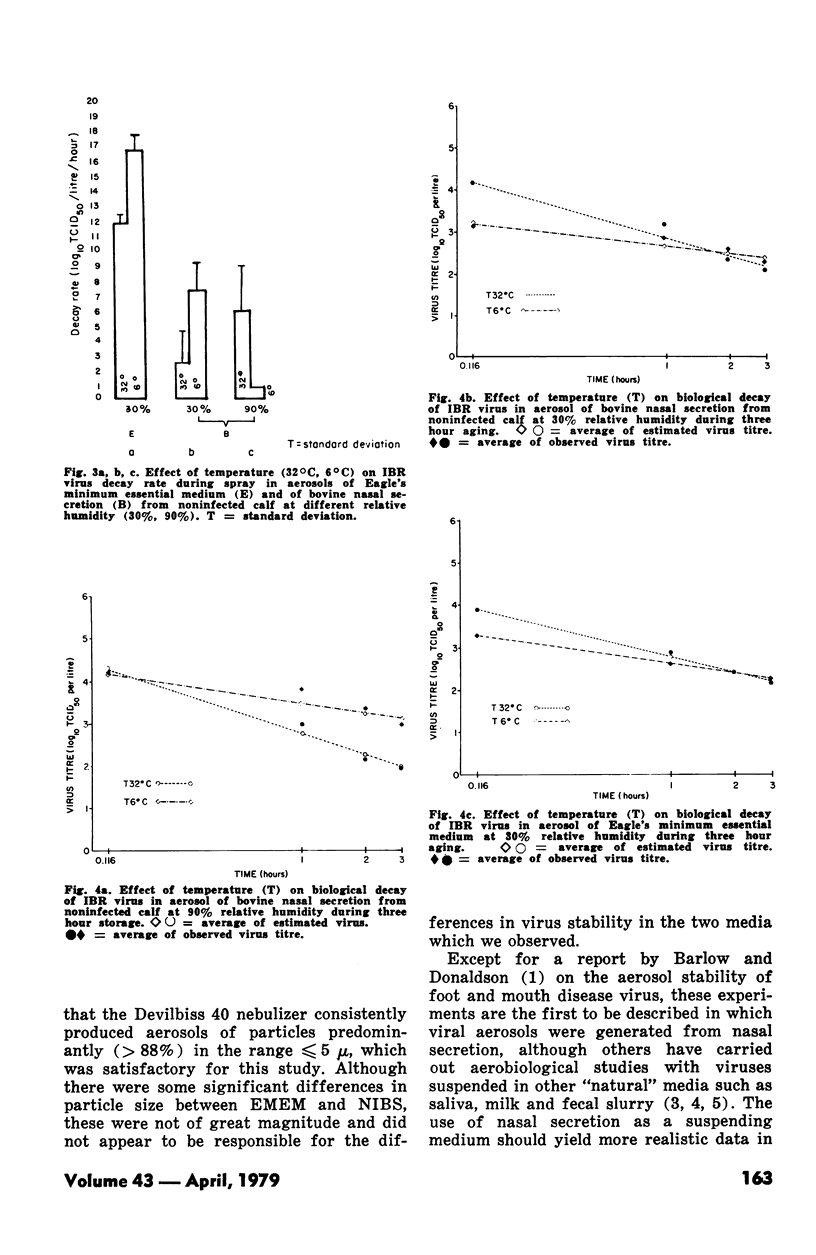
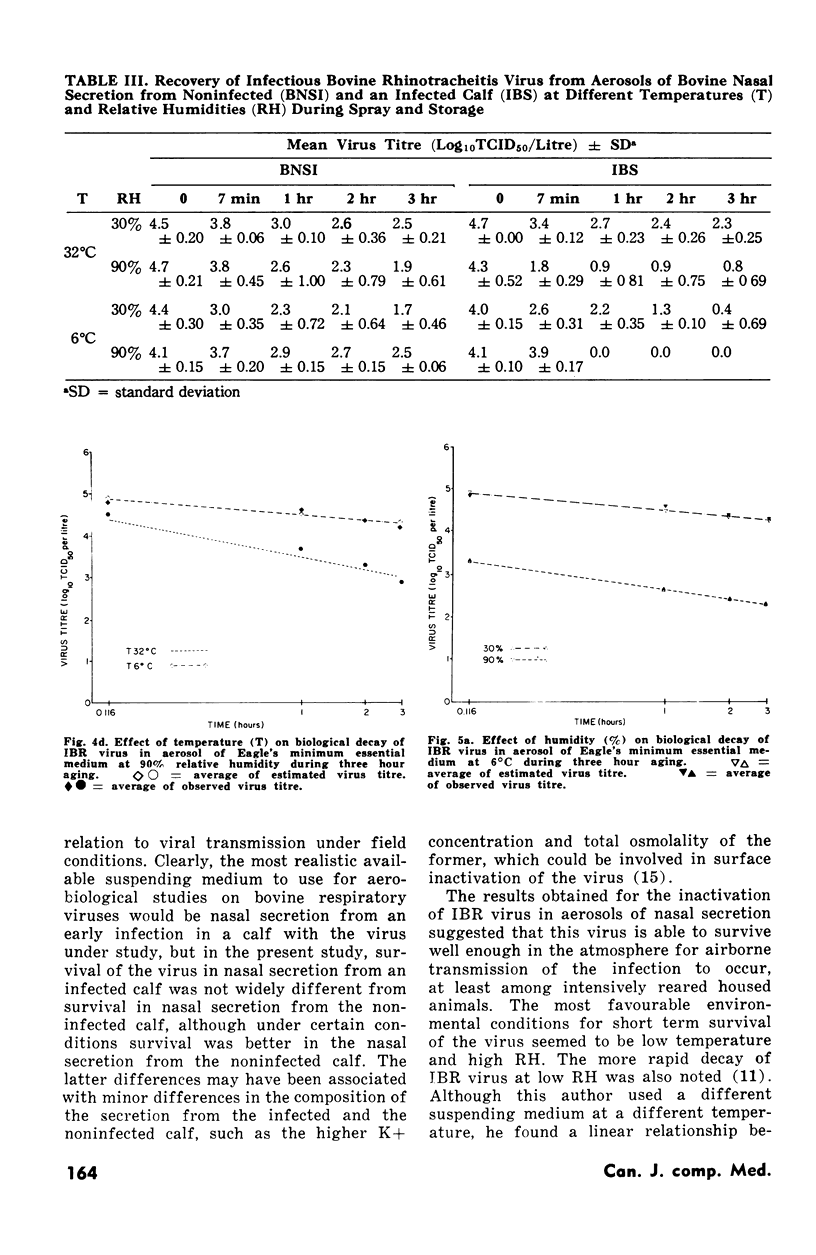

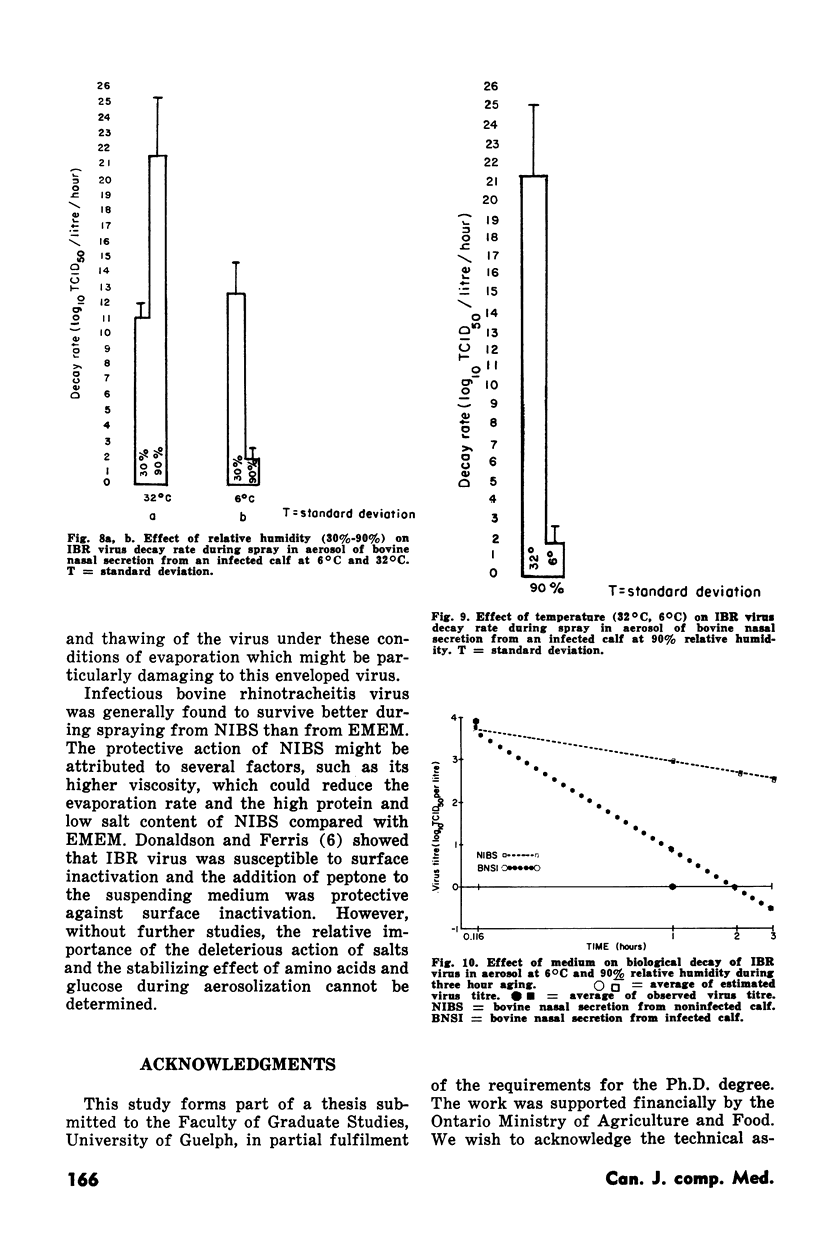
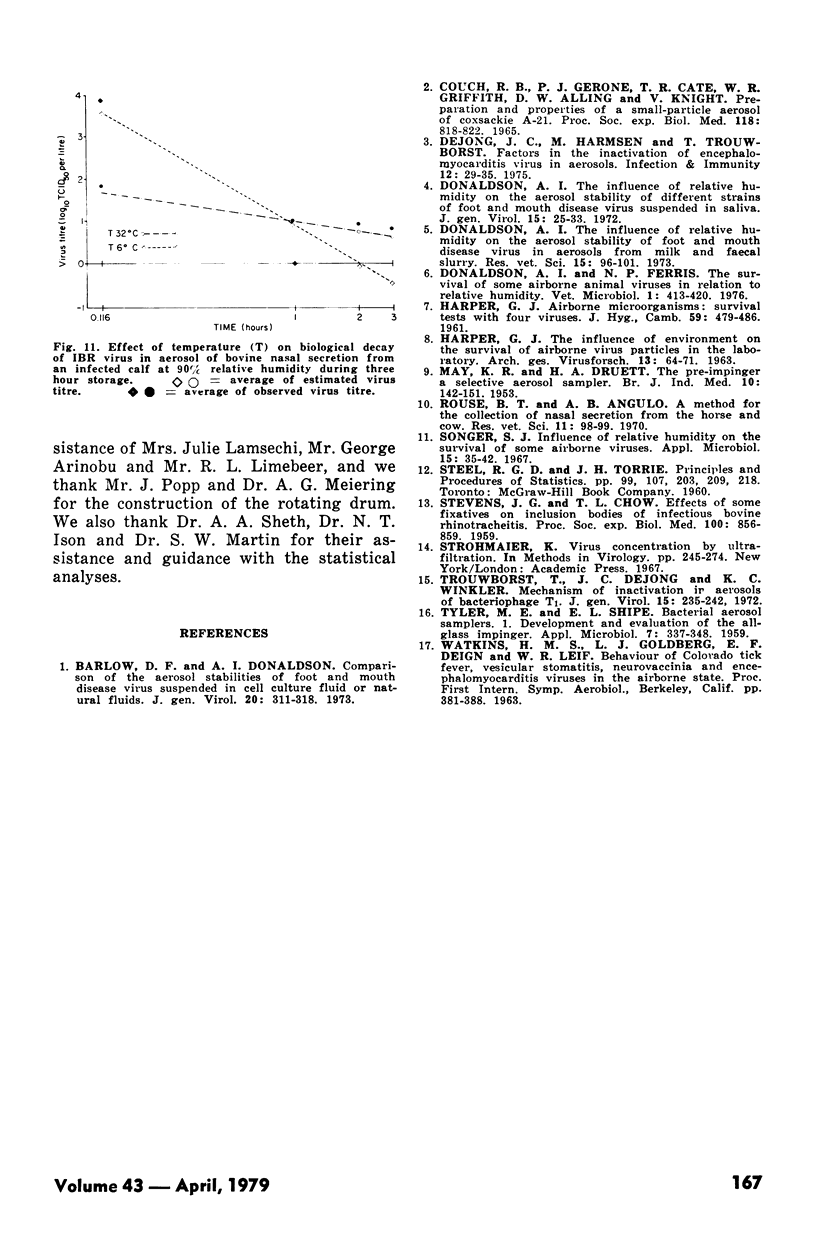
Selected References
These references are in PubMed. This may not be the complete list of references from this article.
- Barlow D. F., Donaldson A. I. Comparison of the aerosol stabilities of foot-and-mouth disease virus suspended in cell culture fluid or natural fluids. J Gen Virol. 1973 Sep;20(3):311–318. doi: 10.1099/0022-1317-20-3-311. [DOI] [PubMed] [Google Scholar]
- COUCH R. B., GERONE P. J., CATE T. R., GRIFFITH W. R., ALLING D. W., KNIGHT V. PREPARATION AND PROPERTIES OF A SMALL-PARTICLE AEROSOL OF COXSACKIE A21. Proc Soc Exp Biol Med. 1965 Mar;118:818–822. doi: 10.3181/00379727-118-29981. [DOI] [PubMed] [Google Scholar]
- Donaldson A. I. The influence of relative humidity on the aerosol stability of different strains of foot-and-mouth disease virus suspended in saliva. J Gen Virol. 1972 Apr;15(1):25–33. doi: 10.1099/0022-1317-15-1-25. [DOI] [PubMed] [Google Scholar]
- Donaldson A. I. The influence of relative humidity on the stability of foot-and-mouth disease virus in aerosols from milk and faecal slurry. Res Vet Sci. 1973 Jul;15(1):96–101. [PubMed] [Google Scholar]
- HARPER G. J. Airborne micro-organisms: survival tests with four viruses. J Hyg (Lond) 1961 Dec;59:479–486. doi: 10.1017/s0022172400039176. [DOI] [PMC free article] [PubMed] [Google Scholar]
- HARPER G. J. The influence of environment on the survival of airborne virus particles in the laboratory. Arch Gesamte Virusforsch. 1963;13:64–71. doi: 10.1007/BF01243824. [DOI] [PubMed] [Google Scholar]
- MAY K. R., DRUETT H. A. The pre-impinger, a selective aerosol sampler. Br J Ind Med. 1953 Jul;10(3):142–151. doi: 10.1136/oem.10.3.142. [DOI] [PMC free article] [PubMed] [Google Scholar]
- Rouse B. T., Angulo A. B. A method for the collection of nasal secretions from the horse and cow. Res Vet Sci. 1970 Jan;11(1):98–99. [PubMed] [Google Scholar]
- STEVENS J. G., CHOW T. L. Effects of some fixatives on inclusion bodies of infectious bovine rhinotracheitis. Proc Soc Exp Biol Med. 1959 Apr;100(4):856–859. doi: 10.3181/00379727-100-24803. [DOI] [PubMed] [Google Scholar]
- Songer J. R. Influence of relative humidity on the survival of some airborne viruses. Appl Microbiol. 1967 Jan;15(1):35–42. doi: 10.1128/am.15.1.35-42.1967. [DOI] [PMC free article] [PubMed] [Google Scholar]
- TYLER M. E., SHIPE E. L. Bacterial aerosol samplers. I. Development and evaluation of the all-glass impinger. Appl Microbiol. 1959 Nov;7:337–349. doi: 10.1128/am.7.6.337-349.1959. [DOI] [PMC free article] [PubMed] [Google Scholar]
- Trouwborst T., de Jong J. C., Winkler K. C. Mechanism of inactivation in aerosols of bacteriophage T 1 . J Gen Virol. 1972 Jun;15(3):235–242. doi: 10.1099/0022-1317-15-3-235. [DOI] [PubMed] [Google Scholar]
- de Jong J. C., Harmsen M., Trouwborst T. Factors in the inactivation of Encephalomyocarditis virus in aerosols. Infect Immun. 1975 Jul;12(1):29–35. doi: 10.1128/iai.12.1.29-35.1975. [DOI] [PMC free article] [PubMed] [Google Scholar]


